Search results for 'pigments'
-
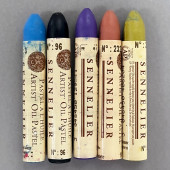
Sennelier Oil Pastels Standard
Starting at: £2.85
Beautifully soft and creamy oil pastels in a range of 120 colours. Blend of pure pigment, oil and acid free wax. 10% discount for 10+ pastels. 20% discount for 20+ pastels. Learn More -
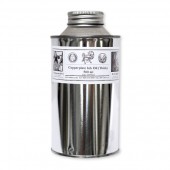
Roberson Copperplate Reducing Oil
Starting at: £24.00
Printing inks can be made by mixing powdered pigments with copperplate oil. Pour small quantity of oil into well of dry pigment and grind with glass muller untill smooth. Thin oil is then added until mixture has consistency of double cream. Thin, Medium or Thick. Learn More -
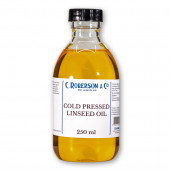
Roberson Cold Pressed Linseed Oil
Starting at: £7.50
Linseed Oil is derived from flax seeds, and appears on our shelves in many guises: Cold Pressed, Refined, Stand Oil, and as a key ingredient in many mediums. It has been appreciated for its drying properties since the Medieval period, and has become the most popular oil used in painting today due to the strong, flexible and glossy film that it creates. Cold Pressed Linseed Oil is ideal for the grinding of pigment to make oil paints. The process of producing Cold Pressed Linseed Oil results in a lower yield, but the resultant oil is of a superior quality to oil that has been extracted by other methods, creating a paint film that is more resistant to embrittlement on aging. Its yellow colour is caused by the high concentration of linolenic acid, the presence of which provides durability to the paint film. The amount of oil that each pigment requires can vary enormously. Alizarin Crimson, for example, requires a high percentage of oil compared to most other colours. We would always recommend mulling the pigment and oil together thoroughly to create a "short" or buttery paste, with evenly dispersed, well-coated pigment particles. This process contributes to the strength and flexibility of the paint film, and prevents the inclusion of excess oil. Origin: USA Learn More -
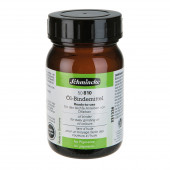
-
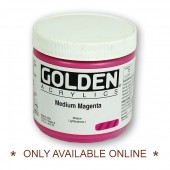
Golden Heavy Body Acrylic 473ml
Starting at: £47.30
The first acrylic colors offered by Golden Acrylic, Heavy Body paints are known for their exceptionally smooth, buttery consistency. The Heavy Body palette includes the largest assortment of unique pure pigments in a 100% acrylic emulsion available to professional artists. These colours offer excellent permanency and lightfastness. There are no fillers, extenders, opacifiers, toners, or dyes added. *Please note, this range is stored offsite. Please allow extra time for your order to be processed and dispatched. Learn More -
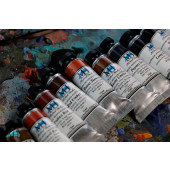
Michael Harding Watercolour 15 ml Tube
Starting at: £13.60
Michael Harding's new range of Professional Watercolours are formulated with the highest pigment concentration possible. A comprehensive range of 136 colours, including historical colours such as Lapis Lazuli and Rose Madder. These watercolours have impressive colour strength, vibrance, clarity, and longevity. Learn More -
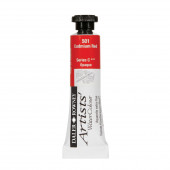
Daler-Rowney Artists Watercolour 5ml Tube
Starting at: £7.10
Artists' Water Colour is a professional quality water colour. Based on the finest modern and traditional pigments, it is precisely formulated to offer unparalleled performance and permanence. Learn More -
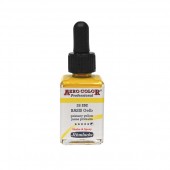
Schmincke Aerocolour Inks
Starting at: £8.30
A highly concentrated acrylic pigmented colour suitable for drawing pens, calligraphy, brush and airbrush techniques. 36 standard colours and 12 'special effects' colours. Lightfast and waterproof when dry. Glass Jar with dropper. Learn More -
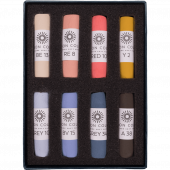
Unison 8 Portrait Assorted Pastels
£45.60The Unison classic Portrait 8 set, specially selected by John Hersey for portrait painting. Unison Colour Soft pastels allow for ease of use with a highly blendable texture.
Learn More -
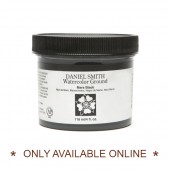
Daniel Smith Watercolour Ground Mars Black 4oz
£10.30Mars Black makes our Luminescent Watercolors “pop” and also provides an exciting, unexpected background for all your standard watercolour paints. Soft pastels, graphite and watercolour pencils show up beautifully on both the buff and black. *Please note, this product is stored offsite. Please allow extra time for your order to be processed and dispatched. Learn More -
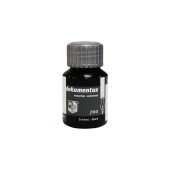
Rohrer and Klingner Dokumentus Ink Black 50ml
£26.20Rohrer and Klingner Dokumentus ink is designed for fountain pens (best with wide nibs) and made specifically for signing official documents which require long term permanence. Dokumentus is made with small diameter micronized pigment and is waterproof and lightfast (unlike most fountain pen inks which are made with dyes and therefore not lightfast over time). Learn More -
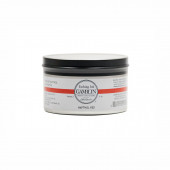
Gamblin Etching Inks 300ml
Starting at: £20.90
Gamblin Etching Inks were formulated at the request of professional printmakers in the Pacific Northwest who wanted strong reliable inks for edition printing. The palette of pure intense pigments offers a broad range of color mixing potential. Learn More -
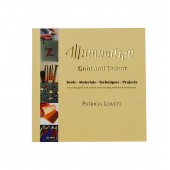
Illumination Gold and Colour Book
£15.00Patricia Lovett is one of the world’s leading authorities on the techniques and practical processes of making mediæval manuscripts. She lectures and teaches all over the world on calligraphy and illumination, and has written about a dozen books on these subjects, as well as producing a DVD – Illumination – Tools, Materials, Techniques, Projects. Patricia has run calligraphy courses as well as those on traditional manuscript gilding and painting techniques, and was awarded an MBE for her services to heritage crafts and calligraphy. This book takes the beginner and those with more experience through step-by-step processes to produce simple and easy projects using cheap metals and modern adhesives, and also to create mediæval miniatures and illuminated scrolls on vellum (animal skin). Learn More -
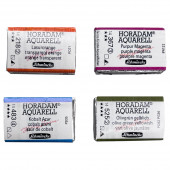
Schmincke Artists Watercolour Whole Pan
Starting at: £7.95
Finest quality watercolours made in Germany. This range offers 139 colours, including 95 single-pigment colours, 3 perylene pigments, 5 quinacridone pigments, and a selection of granulating colours. They present endless mixing possibilities, and can combined with Schmincke's selection of watercolour mediums as well as with their gouache paints. The solid colours are produced by pouring the liquid paint into the pans four times, ensuring the maximum yield for each colour. Also available in half pans and tubes of 5 and 15ml. Learn More -
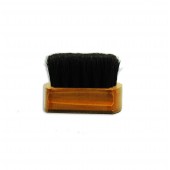
Sosaku Brush 60mm
£18.60Sosaku inking brush for working the pigments and glue paste onto the carved block for printing. These are made from horse hair and are traditionally prepared by splitting and softening the hair on shark-skin or sandpaper before printing. Brushes come in 3 sizes. Learn More -

STABILO CarbOthello Pastel Pencil Sets
Starting at: £25.20
STABILO CarbOthello is a chalk pastel coloured pencil range available in up to 60 colours. With its wonderfully dry and dusty stroke it is just like a chalk pastel in pencil format. It's very popular with artists, art students and people with creative hobbies. Its high pigmentation guarantees great luminosity and opacity as well as colour fastness and colour brilliance especially on dark backgrounds and delicate papers. What's more it can be sharpened to a very fine tip which make it ideal for detail. Colours can be dry mixed and blended which makes colouring more fun and special.
Learn More -
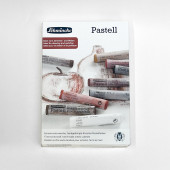
Schmincke Drawing Set, 9 Pastels and Pad
£39.00Schmincke Cardboard Set of 9 Hand-Made Artists' Pastels with Ingres Pastel Paper. Learn More -
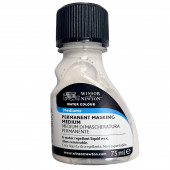
Winsor & Newton Permanent Masking Medium
Starting at: £9.25
Pigmented rubber latex. Application gives a water impervious film to protect areas from colour applied in broad washes. Not removable. Learn More
-
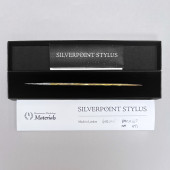
Silverpoint Stylus, Garzone. Renaissance Workshop Materials
£130.00Length 160 mm. For use on prepared paper. Hand-forged in London from silver bullion. Renaissance Workshop Materials are historically authentic drawing materials and tools, which would be recognisable to the artists of Renaissance Europe. Each product is made in the workshop by hand, using historical methods. Each product is borne from the same historical, European craft tradition, as the drawings and artworks from the Renaissance. In the words of the artisan maker, 'We make these materials in order to experience the historical craft and method of drawing in the most authentic way possible.' Learn More -
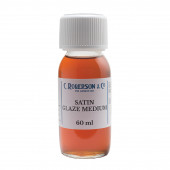
Roberson Satin Glaze Medium
Starting at: £9.80
Mix with tube oil colours or pigment to improve flow and translucency. For thin glazes, fine details and smooth brushwork. Learn More -
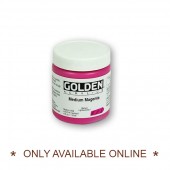
Golden Heavy Body Acrylic 119ml
Starting at: £16.20
The first acrylic colors offered by Golden Acrylic, Heavy Body paints are known for their exceptionally smooth, buttery consistency. The Heavy Body palette includes the largest assortment of unique pure pigments in a 100% acrylic emulsion available to professional artists. These colours offer excellent permanency and light-fastness. There are no fillers, extenders, opacifiers, toners, or dyes added. *Please note, this range is stored offsite. Please allow extra time for your order to be processed and dispatched. Learn More -
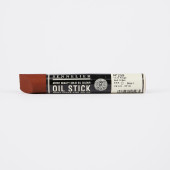
Sennelier Oil Sticks
Starting at: £7.65
Solid artists' quality oil paint sticks. (Ø = 3/4 ; length = 5" ) SENNELIER Extra-Fine Solid Oil Sticks can be used alone or in combination with oil colours in tubes. The oil stick colours can be used for an entire painting. They are applied directly to any traditional oil-painting support, such as canvas, wood panel or fine art paper. They need the same archival priming (acrylic gesso or oil ground) that oil paint requires. Surfaces: Before use, the surface film of the oil stick must be peeled off. It will form again after a few days of non-use, protecting and conserving the colour. The oil sticks must be applied in a thin film application of no more than 1mm thick. Once applied they can be painted over with oil stick or oil paint and if desired be diluted with turpentine. Oil stick Medium, a colourless oil stick, may be used to produce transparent effects and glazes. Once applied, the oil stick surface will dry in 2 to 5 days, depending on the atmospheric conditions Varnishing: If varnishing is desired, you must wait 6 months (as in traditional oil paint) until the colour is completely dry, before giving the painting a final coat of picture varnish. Use a soft brush to varnish so that the oil stick marks are not disturbed. SENNELIER Extra-Fine Solid Oil Stick colours are either opaque (O) or transparent (T) depending on the nature of the pigment in each colour. Oil Sticks do not change during storage and require no special precautions except to be kept away from any source of heat, which could adversely affect the stick. Application Techniques After applying the colour with the point or the edge of the oil stick, colours can be mixed directly on the support using the following methods: • Blending, with brush, finger, or drawing stump. With or without turpentine • Wash-drawing, dilute colours with turpentine or mineral spirit • Retouching, with oil stick, palette knife or brush • Textures, thick application oil stick colour. Retouch with a brush or palette knife •Sgraffito, scratching a layer of fresh paint with a point (brush handle, palette knife, etc.) to reveal the layer below. Sgraffito is related to engraving, and is used not only for revealing the under-layers of paint but also to scratch and clean unsatisfactory parts of the painting •Interior Decoration, on glass, ceramics etc. Use for decorative purposes only Learn More -
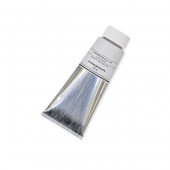
Roberson Artists' Oil Colour 120 ml
Starting at: £23.00
Unlike other commercially available oil paints, Roberson Artists' Oil Colours do not contain any fillers, extenders or stabilisers. Each paint consists solely of high-quality pigment that has been ground into cold pressed linseed oil, resulting in a highly pigmented paint. This strength of colour presents the possibility of greater economy of use and a less homogenised texture between each tube, instead allowing the unique qualities of each individual pigment to reveal themselves. By limiting our range to 59 shades, we dispense with colours that can be easily mixed, creating a focussed palette of intense, lightfast paints that offer limitless combinations.
Available in 40ml and 225ml tubes
Zinc White and Titanium White only available in this intermediate size of 120ml
Learn More -
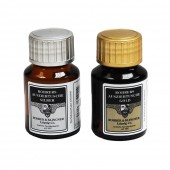
Rohrer & Klingner Gold Drawing Ink
Starting at: £8.10
Drawing Ink (series 29 500). A fine, free flowing pigmented ink. Available in gold and three lightfast traditional tones in shellac binder. Learn More -
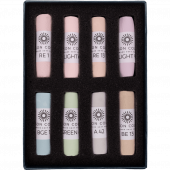
Unison 8 Light Assorted Pastels
£45.60The Unison Light 8 set, specially selected by Unison Colour. This small set contains the essential Light colours from their large range of pastels. Unison Colour Soft pastels allow for ease of use with a highly blendable texture.
Learn More -

-
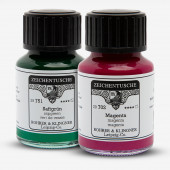
Rohrer & Klingner Drawing & Calligraphy Ink 50ml
Starting at: £7.30
Drawing & Calligraphy Ink (series 29 700). Lightfast pigmented acrylic inks in 24 colours. Intermixable with Rohrer’s Antique Drawing Inks. Suitable for brush, dip pen, technical drawing pens greater than 0.35mm and airbrush. Learn More -
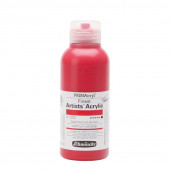
Schmincke PRIMAcryl 250ml
Starting at: £25.30
ONLY AVAILABLE ONLINE[]. Schmincke PRIMAcryl is a high viscosity premium acrylic range. Artists quality high pigment content gives all the shades a new dimension of brilliance and expressiveness. The titanium white is unparalleled. It's high pigmentation, opacity and cover rate enables incredibly brilliant mixtures. No colour shift between the wet and dry states. High lightfastness level either 4 or 5 stars indicates the quality of these premium acrylic paints. All colours do not yellow and the dried paint layers are durable, flexible and water resistant. *Please note, this range is stored offsite. Please allow extra time for your order to be processed and dispatched. Learn More -
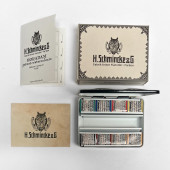
Schmincke Horadam Retro Watercolour Set, 8 x Half Pans, Enamelled Metal Box
£59.00Schmincke Horadam Retro Artists Watercolour Set in a traditional, heavier weight, enamelled mini-watercolour box. 8 half pans: Chrome Yellow Hue Lemon, Vermillion, Ultramarine Finest, Viridian, Yellow Raw Ochre, Raw Umber, English Venetian Red and Schmincke Paynes Grey. 8.5 x 6.5 x 2 cm Learn More -
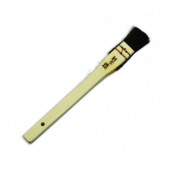
Sosaku Brush 15mm
£6.50Sosaku inking brush for working the pigments and glue paste onto the carved block for printing. These are made from horse hair and are traditionally prepared by splitting and softening the hair on shark-skin or sandpaper before printing. Brushes come in 3 sizes. Learn More





